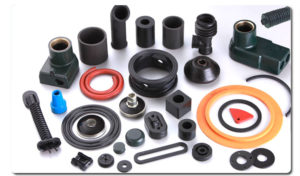Rubber moulding is the procedure of transforming uncured rubber into a usable product. The processes comprise transferring, compressing and injecting raw rubber into a mould cavity. The applied pressure causes a chemical reaction called vulcanization. Due to this, the polymer chains in the material connect to the crosslink.
Every type of rubber moulding process has unique advantages. The manufacturer of industrial rubber products in India do it with expertise and accuracy. In this blog, we have discussed these methods in detail.
AB Elasto Products Private Limited is a renowned manufacturer of industrial rubber products. The experts design high quality, robust and durable products suitable for heavy-duty use. Our products include industrial hoses, air ducts, mouldings, expansion joints etc.

Types of Rubber Moulding
-
Rubber Injection Moulding
The creation of this process is considered an expansion of the plastic industry. The experts inject the heated rubber compound into closed injected moulds under high pressure. You can make it with a range of rubber materials like nitrile, silicone, neoprene etc.
Advantage
- It has fast cycle times.
- It has a fast production time.
- It produces minimal material wastage.
- It has high dimensional tolerance.
Disadvantage
- It comes with an expensive setup cost.
- There is a restriction on tools and design.
- You need to obtain expensive tooling and machinery for this.
-
Compression Moulding
This is one of the original and most simple rubber moulding processes. It works under the combination of heat and pressure, thus moulding the rubber into varied shapes. The pressure comes from the clamping press. Lastly, the experts do the curing or vulcanization step. Finally, they remove the mould after cooling it.
Advantage
- There are low levels of waste generation.
- It needs cost-effective and simple tooling when compared to injection moulding.
- It is suitable for making parts belonging to large cross-sectional areas.
- It can process stiff material.
Disadvantage
- There is difficulty while maintaining the consistency of finished parts
- It has a slow processing time
-
Transfer Moulding
The transfer moulding procedure starts preparing the raw material as “pre-forms”. The machine will force the slug into the mould, and the rubber take its desired shape. Next, they force the mould through the runner and a gate system. Finally, it vulcanizes through the introduction of heat and pressure.
Industrial rubber products made using this method are high quality and durable.
Advantage
- It is an accurate and consistent process than compression moulding
- It has a shorter manufacturing phase because it allows the usage of multiple cavities
Disadvantage
- It produces more material wastage
- The tools need more time for repair, removal and maintenance
- The process is costly for intricate mould designing
Since you know about the rubber moulding processes, choose the right one as per product requirement. Get in touch with the experts to know more.
